Shortly after being accepted into MiracleAir as a pilot, I have made several efforts towards getting my seaplane rating, as floatplanes are what MiracleAir's fleet is comprised of at this point.
Operating a seaplane comes with its challenges and risks, so I started exploring seaplane flight schools that could help me be the most prepared for mission service.
Just after graduating from SMAT, I went to a small seaplane flight school in Michigan called Michigan Seaplane. I really enjoyed flying with them, but the day of my check-ride, the examiner I was in communication with said it wasn't an option and he was no longer available. Michigan seaplane had completed my training and they tried to help me find another option, but there were no other examiners available in the area.
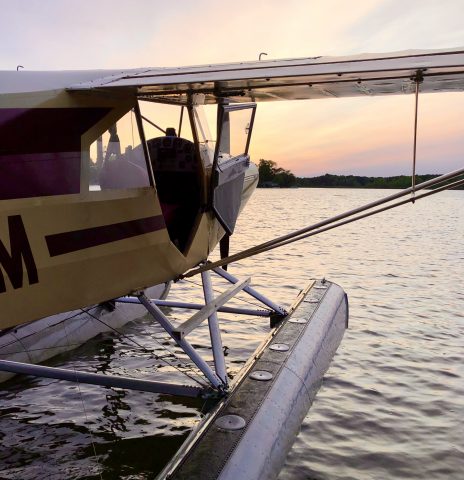
Within a few weeks I had tried scheduling with three different pilot examiners for a seaplane check-ride but each time, something came up so it didn't work. This delay to most people would have been very frustrating, but I had numerous evidences of God's leading in the past. I had also became more and more sure that God had called be to serve with MiracleAir. My excitement has grown tremendously, and I have been able to trust God's timing in this delay. He has a plan and his timing is perfect, so I did as much as I could in preparation while I watched for God's leading.
I spent the holidays with family and felt that that time was very needed. I had the privilege of presenting about MiracleAir with four congregations during that time, and made some very good connections with donors.
By the time I was able to start working on my seaplane rating again, I was faced with a new challenge. The lakes in Michigan and the surrounding states started freezing over, and I didn't know in what direction to proceed. I came across a seaplane school in Cincinnati, OH. It seemed like a good option as they use a river for their operations and it doesn't freeze over. The weather was the biggest challenge and working around that proved difficult. The other issue was when we had a sunny day there, the temperature would be below freezing which would not have been good.
Finally, I found another option. After nearly four months of various attempts, I found a flight school far enough south that the freezing conditions weren't an issue there. We worked out a schedule, and I caught a flight to New Orleans, LA to finish my training at Southern Seaplane, Inc.
Southern Seaplane is a great program and they worked with the training I had gotten in Michigan and added in some scenarios that would be more applicable to flying in Nicaragua. We practiced landings in crosswinds much stronger than I had experienced in a seaplane before that point. This was helpful for me in building my skill and confidence.
We were able to use narrow channels to simulate a river landing and patient pickup. I was able to get a good amount of sailing practice using the airplane controls and the engine off. I was also taught how to approach a dock and tie the airplane safely and securely.
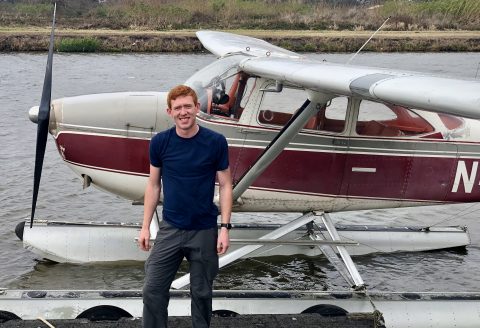
After a few flights, I took the Single-Engine-Sea check-ride and easily passed. For me, I had gone through the seaplane training twice and felt the most prepared I had ever felt before a check-ride. It was also the quickest check-ride I had ever had. I was so glad to be finished with it after so many scheduling attempts and weather issues slowing me down!
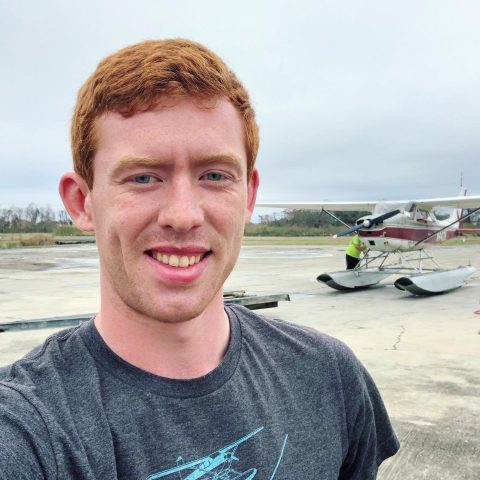
Once I had completed my check-ride, I moved into ground school for Southern Seaplane’s safety institute. We covered in detail how to avoid countless accidents which involved costly repairs or fatalities. The objective was simple: to give me tools and skills in order to prepare me to avoid these same mistakes and create a safer environment for everyone involved.
Day one was mostly in the classroom, and by the end, I had learned so much and knew a lot more about some of the how and why things are in a particular order on the checklist.
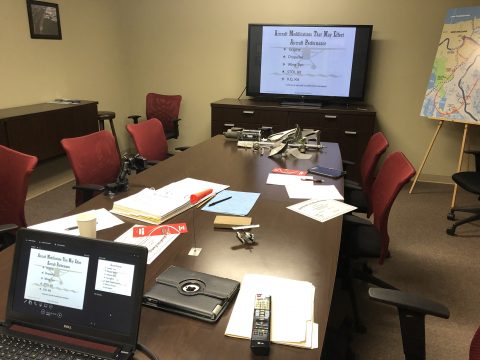
Day two of the Seaplane Safety Institute, I was sent to a facility that specializes in training for emergency situations aboard an oil rig.
We spent the morning learning about water safety and egress measures. In the afternoon, our training revolved around putting our knowledge into practice. We were briefed and then we strapped into a crane-operated contraption that was able to be swing into a pool and "capsize," leaving its occupants submerged in water. There were two divers ready to help as needed. We had rehearsed our ditching procedures and were prepared. As the fuselage frame settled upside down and underwater, we pushed out the windows and then with a good point of reference, unfastened our seatbelts and pulled ourselves to safety. I imagined it to be a terrible experience with my sinuses filling up with water, but it didn't seem to be a big issue for me at all.
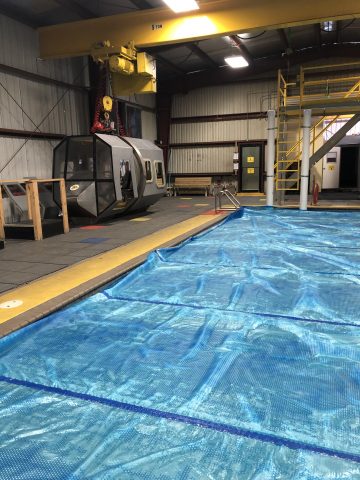
I did have to overcome the disorientation of being upside down and underwater, but staying calm was key. Panic causes people to use their air faster than staying calm, thus the emphasis was on staying calm and getting out safely.
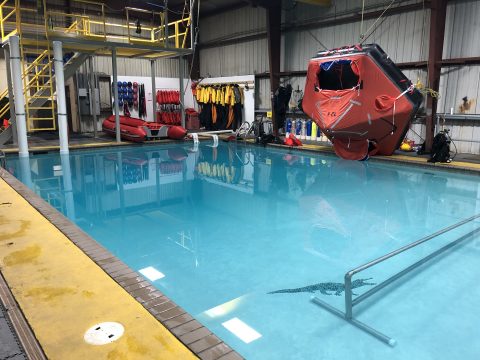
Day three of the Seaplane Safety institute was a wonderful experience. I had two flights, each with a different instructor. The first flight emphasized a series of techniques to push my limits and see how the airplane performed under various maneuvers. We did steep turns and emergency procedures.
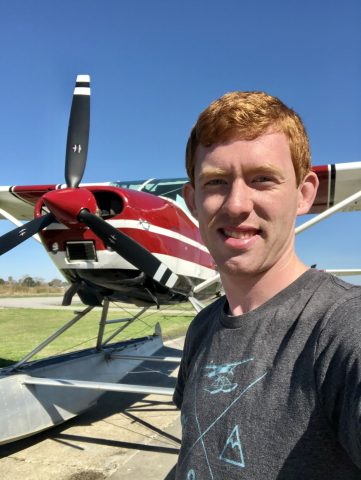
My instructor and I flew to areas of swampland and we practiced in the waterways with various landings, takeoffs, taxiing techniques, and weaving our way through floating debris. We dodged pelicans and seagulls almost every turn we made through the swamps. One of the biggest emphasis points was amphibious gear procedures and how to make sure to not forget the position of the gear.
It is critical to have the gear up for water takeoffs and landings, and the gear need to be down for landing on pavement. Several gear checks and maintaining a careful lookout for the gear position was critical.
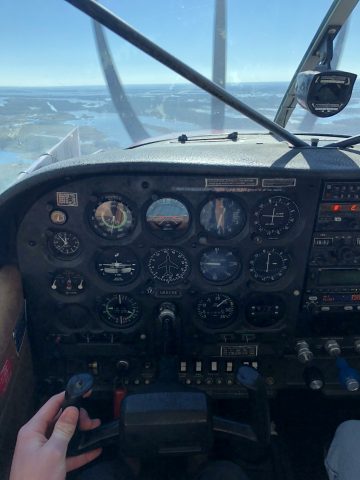
On one of my training flights, I was nearing the end of my training, and as we were concluding what I had learned, we set out inspecting the waterway and approach to a dock along a river channel. I determined it was long enough for us to land and which way would be best to approach the dock.
After a lower approach where we could see better, we saw a little bit of mud before the shoreline indicating a lower tide. As we landed and approached the dock, I shut the engine off and we glided towards the shore. Suddenly there was a lurch, and we stopped still. We were stuck in the mud.
We got out, and stood on the floats. My instructor showed me that jumping gently on the rear of the floats turned the airplane in the mud, and we got it turned enough to safely start the engine and power up and get out towards deeper water without much trouble.
I then finished my training, and was so grateful for the delay I had experienced in previous attempts in getting a check-ride. The training I had gotten in Michigan was good towards the check-ride, but the training at southern seaplane was really beneficial for expanding my skills that will be relevant for flying in Nicaragua. There is always more to learn but this training I feel I have a good foundation.
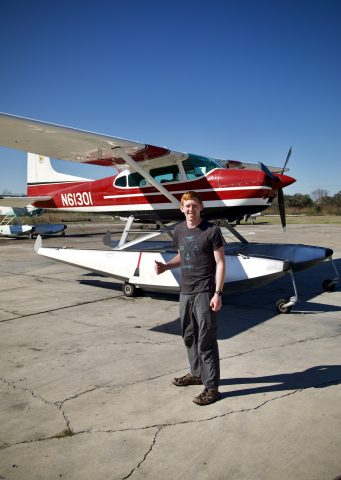
The next step for me that I have started is to convert my US pilots license to a Canadian reciprocal license. This had to wait until I had passed my floatplane check-ride so I could operate under the Canadian license in Nicaragua.
Things to pray for: